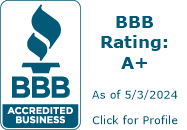In the ever-evolving landscape of education, creating dynamic and engaging learning environments is paramount. Rolling whiteboards have emerged as versatile tools, making their way into classrooms and educational spaces worldwide. In this article, we will explore the transformative potential of rolling whiteboards and how they contribute to modern teaching and learning.

The Evolving Classroom
Flexible and Mobile Learning
One of the significant shifts in education is the move toward flexible and mobile learning. Traditional classroom setups, with stationary desks and fixed boards, are giving way to dynamic spaces that adapt to different teaching methods and activities. Rolling whiteboards play a pivotal role in this transformation.
Fostering Collaboration
Collaborative learning is a cornerstone of modern education. Rolling whiteboards create a canvas for collaboration, enabling students to brainstorm ideas, solve problems, and work on group projects seamlessly. These mobile boards can be easily moved to different parts of the classroom, encouraging interaction and teamwork.
Features that Matter
When considering rolling whiteboards for educational settings, certain features become particularly important:
Magnetic Surfaces
Opt for rolling whiteboards with magnetic surfaces. This feature allows teachers and students to use magnets and magnetic accessories like document holders and clips, enhancing presentations and lessons.
Adjustable Height
To accommodate students of varying ages and sizes, look for rolling whiteboards with adjustable height settings. This ensures that the writing surface can be positioned at an appropriate level for everyone, from elementary to high school students.
Durability
In busy educational environments, durability is key. Choose rolling whiteboards with robust frames and high-quality surfaces that can withstand daily use. Investing in quality ensures your boards will last for years to come.
Portability
The mobility of rolling whiteboards is one of their primary advantages. Make sure the boards come equipped with sturdy casters or wheels, allowing for easy transportation between classrooms or within a single room.
Integrating Rolling Whiteboards into Your Classroom
Flexible Seating Arrangements
Experiment with different seating arrangements to make the most of your rolling whiteboards. Create circles for discussions, clusters for group activities, or traditional rows for lectures. The adaptability of these boards empowers you to transform your classroom setup to align with your teaching goals.
Active Learning Stations
Designate specific areas in your classroom as active learning stations. Equip these spaces with rolling whiteboards, markers, and erasers, and encourage students to use them for problem-solving, brainstorming, and collaborative projects.
Interactive Presentations
Leverage the mobility of rolling whiteboards to engage students during lessons. Move the whiteboard closer to your students to facilitate participation or use it as a focal point for multimedia presentations. The flexibility offered by these boards enhances the overall learning experience.
Rolling whiteboards have become indispensable tools for modern educators, transforming traditional classrooms into flexible and interactive learning environments. Their mobility, adaptability, and collaborative potential empower both teachers and students to explore new dimensions of teaching and learning. By integrating rolling whiteboards into educational spaces, we are taking a significant step toward fostering dynamic and engaging educational experiences.



